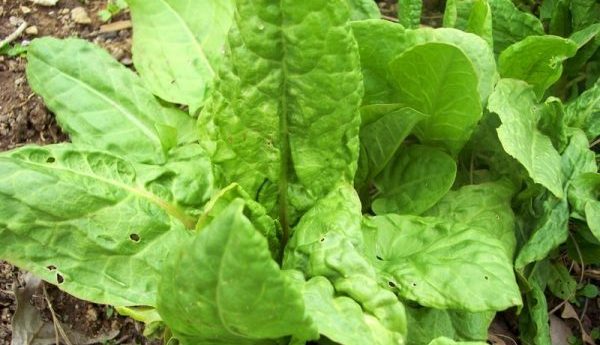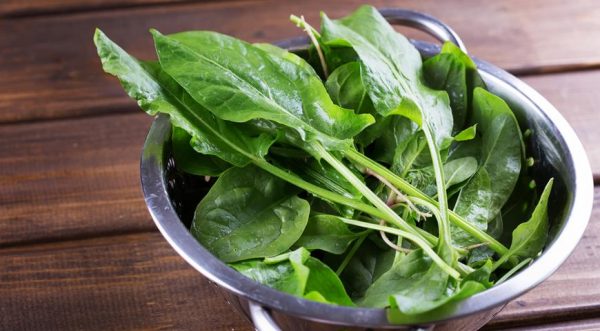About sorrel planting and outdoor care
Content
Planting sorrel seeds
Sorrel is sown in open ground using seeds, and there is no special reference to the sowing time. Given the unpretentiousness and frost resistance of the culture, planting can be carried out during the entire warm season: in spring, summer, or late autumn, in order to get an early harvest next spring. However, the most successful is the spring sowing of seeds, when there is a guarantee that they will definitely not freeze, and the chances of growing a crop are great.
The soil in which the sorrel will be grown must be prepared in advance. If it is supposed to be planted in the spring, then the soil must be prepared in the fall. It is better to grow sorrel on fertile loamy soil. The acidity of the soil does not really matter for the crop, however, the place where you will grow the crop should not be swampy, or be in a lowland where water can stagnate.
Processing a plot for growing sorrel involves deep digging, cleaning the soil from weeds, roots and lumps. You need to plant seeds in the soil filled with organic fertilizers: during digging, wood ash and humus are introduced 4-5 kg / sq. m, superphosphate 30 g / sq. m, nitrogen 20 g / sq. m. In the spring, just before sowing seeds in the open field, the bed must be re-loosened and leveled with a rake.
Growing sorrel does not take up much space in the garden. A solid harvest can be grown even in a garden with an area of 2 square meters. m, since the culture grows quite compactly. To plant sorrel with seeds, you need to make small (1-1.5 m) rows 4-5 cm deep, at a distance of about 20 cm from each other. Further, the seed can be planted in the furrows. From above, the seeds are sprinkled with earth so that they are in the soil no deeper than 1.5-2 cm - otherwise, most of the seeds simply cannot break through from the ground, and the seedlings will be very weak.
You can accelerate the germination of seeds by soaking them in water for a day, as well as covering the beds with a film or some dense material, for example, a tarp. Under cover, seedlings appear much faster - after about 5-7 days, while in unprotected open ground, seeds germinate for 1.5-2 weeks. Before the emergence of sprouts, care consists in periodically watering the beds.
Growing Secrets Video
Informational video with secrets for growing sorrel.
Outdoor care
Growing sorrel in the garden is not particularly difficult. The main care of the crop in the open field is timely watering, weed removal and loosening of row spacings. In the first year, watering should be regular - it is necessary to ensure that the soil is always slightly damp, since drying out of the soil will provoke the formation of peduncles, and thereby prevent the growth of good greens. In subsequent years, watering is carried out as needed.
Also, caring for the beds includes the obligatory weeding and removal of weeds. Simultaneously with weeding, the row spacings are loosened. So that the soil does not dry out and the weeds do not grow, it is recommended to mulch sorrel in the root zone with compost, sawdust or other organic matter - this approach will not only prevent the growth of weeds, but also become a good top dressing, which will allow you to grow a better crop.
A crop cannot be grown without fertilizers. The first feeding of the sorrel plantation is carried out in the spring. At this time, mineral mixtures containing nitrogen are introduced into the soil. Further, feeding the beds with a liquid mullein at a concentration of 1:10 is carried out after each mass cutting of greens - this event is very important for the resumption of plant growth. During loosening, liquid manure or ash solution can be applied to the aisles.
Throughout the warm season, plant care also includes pest control. Most often sorrel affects powdery mildew (grayish spots on the back of foliage), rust (small brown spots on the surface of greenery), aphids, various beetles and larvae. In this case, the planting is treated with Bordeaux liquid or ash solution. In very advanced cases, insecticides are used, but after that you cannot eat greens - you need to cut them off and wait for new leaves to grow. It should be clarified that sorrel is quite resistant to diseases. If the plants are provided with proper care, and the cutting of greens is carried out regularly and correctly, then it is possible to grow the crop without pests and diseases.
At the end of the growing season, caring for the bed consists in cutting off the entire ground part of the plants and mulching the beds with peat or compost. Such a nutritious coat will help grow a bountiful harvest for the next year.
Growing features
Despite the good adaptability of sorrel to any growing conditions, its cultivation has some features:
- it is not recommended to grow the crop in a sunny place - the area intended for growing greenery should be in partial shade, while the soft sun should fall on the plants in the evening;
- a garden bed with sorrel can be grown in one place for up to 5 years, but this can lead to degeneration (the leaves will become small and coarse) - periodic (every 3-4 years) transplantation will help to avoid this: you need to dig out the bushes, divide them, and put in another place;
- you need to cut the leaves 4-5 times per season - this procedure improves plant growth, and allows you to grow more lush and juicy greens;
- according to the rules of crop rotation, the cultivation of sorrel will be more successful if its predecessors in the garden were onions, cabbage, herbs, potatoes;
- in the fall, it is necessary to plant sorrel with seeds in late October - early November, so that the seeds do not have time to germinate before the onset of frost.
Harvesting
Sorrel leaves reach yielding maturity in 70-80 days from the time they were planted. When sowing seeds in open ground in early spring, you can harvest from May to July. If you want to have vitamin greens earlier, you need to plant seeds in late autumn - then they will germinate as soon as the snow melts. In this case, the first greens can be cut 2-3 weeks after germination.
The greens need to be cut off, or torn off along with the stalks. Medium small leaves should not be torn - we will grow the next crop from them. Collecting greens is best done in the morning - at this time, the leaves are more juicy. In this case, it is necessary to wait for the dew to dry out, since wet leaves are poorly stored (they rot faster). You can also cut the greens in the evening after sunset. If the garden bed is well cared for, you can harvest 3-5 times during the season.
In August, the cultivation of greenery stops, and the leaves are no longer cut off - this is necessary so that the plants can accumulate the nutrients they need for wintering. If you have a sorrel bed, it makes sense to grow your own seed. To do this, you need to leave 2-3 bushes in the ground, and do not cut off the leaves from them. In early June, inflorescences are formed on the bushes, and by the middle of summer fresh seeds will be ready, which next year can be planted in open ground and a new crop can be grown.
Storage
There are several ways to save sorrel for future use: freeze, dry, preserve. Freezing is a faster and healthier way, as it allows you to preserve all the nutrients and does not lead to loss of color, which is very typical for sorrel greens. For freezing, you need to sort out the leaves, rinse well, then dry a little. Next, the greens should be cut - this is the most troublesome moment, and many housewives, in order to save time, freeze the leaves entirely. However, later, when using, there are inconveniences with chopping frozen greens, so it is advisable to cut them before freezing. Next, the chopped greens are packed in portioned bags and placed in the freezer.
Drying is also a good way to process oxalic greens, however, it should be understood that when dried, the leaves lose their color a little. For drying, you need to prepare greens in the same way as for freezing. Then put it on a covered baking sheet and place in a dry, preferably dark place. Sorrel leaves dry out quickly, in just a couple of days.
The next way is canning and salting. The latter option has some drawbacks: firstly, the product turns out to be salted, and secondly, such blanks need to be stored only in the refrigerator. The canning option is more acceptable, since the workpiece is moderately salty. Blanched greens are placed in sterilized jars, poured with hot salted brine, and sealed with lids. No preservatives are used as oxalic acid itself contributes to the preservation of the product.
Video "How to Grow Fresh Greens"
Demonstration video with recommendations for growing greens.







